[목살]11 Ways To Totally Defy Your What Is Innovation Strategy
184
2023.03.08 17:31
짧은주소
본문
Innovations Needed Today
There are a variety of technological advancements that are required in today's society. The AT04A vaccine, next-generation exoskeletons as well as digital therapeutics are but some of the many innovations that are required in the present. These advancements can make a difference in lives and enhance our health.
Cellular phones
Cellular phones are a great device for a variety of purposes. They can be used to communicate with other users and can be useful to do everything from obtaining prices to asking for financial assistance.
Over the years, technology for cell phones has had a significant impact on society. Cellular phones have come a long way from their humble beginnings to widespread use. It's one of the major elements of the information age. We'll examine its past and how it has impacted the way we communicate.
Two-way radiophones initially were utilized for emergency calls however, the technology wasn't readily accessible to the general public. Despite its many benefits, the majority of people were skeptical that the cellular system could be economically viable.
Bell Labs researchers began work on a cell-phone network in the 1970s. The idea was to construct low-powered broadcast towers to cover tiny areas of land. Each cell was connected to the main network of telecommunications via a base station.
The first phones were powered by nickel-metal hydroide batteries. Modern phones use lithium-ion batteries.
A cell phone may be used for its practical purpose, but it can also function as a security tool. A mobile phone can be used to check the security of your home or notify your security guards of an imminent bomb.
A cellular phone can be used to access social media sites like Facebook and Twitter. With a smartphone, users can send and receive text messages, see videos and images, and Group (Winstead-hendrix.thoughtlanes.Net) share your personal information with others.
Smartphones can also be used to monitor your heart rate and blood pressure. Another advantage of using smartphones is the capacity to monitor infectious diseases. Several inexpensive add-ons allow you to upload and tag data on pathogens in your blood and track the signs of cancer and malaria.
Next-generation exoskeletons
Exoskeletons with the next generation are in high demand today, and are likely to become a part of the people who utilize them. They are designed to assist those suffering from neuromotor problems or those who have lost their legs. While these exoskeletons have produced some remarkable advances however, there are many limitations.
The main challenge in creating an exoskeleton is predicting the motion of a user. This means that the exoskeleton needs to be able to detect the motion of the user's arms and legs, and translate it into machine motion. EMG signals are used to achieve this, based on the electrical potentials that are recorded on the muscle's skin.
One way to do this is through non-invasive s-EMG A simple method that gathers real-time muscle activation signals. These signals can be transmitted to a mobile device which then utilizes the data to serve the intended purpose of the user. An exoskeleton can utilize the sensor to determine whether the hand is grasping or pinching, flexing, or extending its arm.
A recent study has shown that a soft elbow exoskeleton reduced the fatigue of the elbow. It also showed a soft interface between humans and machines.
The technology is limited in two ways. It cannot perform shoulder abduction, ibestea.co.kr which is a major issue for other exoskeletons. The second reason is that it does not have deep-learning capabilities.
These technologies have another limitation: they require a lot mechanical force. They also require connection to electrical cables. Even if they're not physically connected to the wearer, the system will still need a power supply.
These are the issues that have to be addressed before the exoskeletons that will be used in the future will have a positive effect on our lives. We may be just a few decades away from having exoskeletons controlled by brains, but these solutions are already on the next horizon.
Digital therapeutics
Digital therapeutics is a rapidly expanding segment of healthtech. They can enhance traditional treatments and provide a variety interventions. They can also help patients with illness and improve their quality of life.
They make use of cutting-edge technology and artificial intelligence to enable the synchronized communication between patients and their HCPs. These technologies can aid in reducing costs for patients, increase treatments for chronic conditions and assist patients in avoiding costly emergency care. However, they can also present risks to the patient.
The industry of digital therapeutics has seen significant growth in the past few years. According to the most recent estimates, the demand for digital therapies will increase 10 times by 2023.
The therapeutics industry in the digital age is also experiencing a dramatic increase in venture capital financing. Global funding in this industry grew four times over the last two years, with investments reaching $1.2B in 2022.
FDA has created a brand new method of digital health products regulation. This includes a pilot program that supports the promotion of devices that are less risky. It also monitors and collects data on a regular basis.
While the FDA's regulatory approach to digital therapeutics has evolved however, developers must create safe and effective products. This means they have to prove their worth and address concerns of consumers as well as those who pay for the product.
Digital therapeutics developers must adhere to certain standards of clinical efficacy and security to ensure that they provide high-quality solutions for patients. This includes providing scientifically proven evidence of the effectiveness of the product, effectiveness, and the way in which the product can address the patient's needs.
Developers can also self-regulate their practices by adhering to the principles of the Digital Therapeutics Alliance. They will be able to serve their patients better as well as produce high-quality products if they follow the principles of the Digital Therapeutics Alliance.
AT04A vaccine
The AT04A vaccine is an ingenuous method to reduce the risk of developing heart disease. It works by reducing the number of plaques that cause atherosclerosis and by reducing the amount of fat deposits within the arteries. Additionally it also reduces inflammation of the arterial wall.
The AT04A vaccine was initially tested in mice. It is currently being tested in human clinical trials. Researchers have discovered that the vaccine can increase the number of atherosclerotic lesions free aortic segments. The vaccine also reduces the macrophage-derived chemokine from the plasma and VEGF levels.
Moderna and Pfizer created the AT04A vaccine A synthetic messengerRNA (mRNA) product. It is made up of four nucleotides and is designed to block receptors it targets.
mRNA has the advantage being produced at a huge scale. This allows it to be used for therapeutic purposes and for vaccines. However, mRNA is known to cause symptoms.
Another advantage of mRNA in comparison to receptors is that it can override them. This allows mRNA into cells again. It also increases the efficiency and production of protein.
A new class of drugs was released of cholesterol-lowering drugs dubbed PCSK9 inhibitors. While this is a promising option, it is costly and requires frequent administration. A AT04A vaccine would potentially be a cheaper solution to lower the amount of LDL-C in the body.
Vaccines can help stop serious illnesses and even death. They must also be secure. There are many types of vaccines, and many are made with adjuvants. In the ideal scenario, the combination of an antiatherosclerotic vaccine should contain an epitope that stimulates the immune system to generate antibodies to eliminate LDL-C from the body.
Solar Ear
Solar Ear is a new technology in the field of hearing. The company designs and produces solar-powered hearing aids at low costs. It also provides programs for training and employment to people who have hearing loss.
This company aims to aid deaf communities, and improve the lives of people suffering from hearing loss in the developing world. They make digital, solar-powered rechargeable hearing instruments that are half the price of traditional models. They also design and distribute affordable hearing aids to the most disadvantaged children.
The company works with local partners in each country, writing business plans, obtaining funds, and training locals. In Brazil, for example they have developed an education program for deaf individuals to construct and construct the devices themselves.
Solar Ear's innovative model has been replicated in many other countries, including China. It now targets sixty countries, including Argentina and Bolivia, Cuba, Dominican Republics, Ecuador, Ghana. Haiti, Nicaragua, Nigeria. Paraguay. Peru, Puerto Rico. Uruguay, Venezuela.
Hearing impaired students are often kicked out of school or struggle to take part in school activities. They are able to attend school with their hearing peers using a Solar Ear.
Founded by Howard Weinstein, a former World University Service of Canada volunteer, Solar Ear has sold more than 20,000 units across 30 countries. They are currently working on launching in Israel and Canada.
The batteries powered by solar energy are compatible with 95% of all hearing aids that are available. They also last up to three years.
The company is planning to expand to Russia, Mexico, Israel, and other countries. They are working on a franchise model that can help entrepreneurs who are deaf in Latin America as they grow.
More than two million people around the world suffer from hearing loss. It is the biggest reason for poverty. Access to hearing aids may aid in eliminating social exclusion.
There are a variety of technological advancements that are required in today's society. The AT04A vaccine, next-generation exoskeletons as well as digital therapeutics are but some of the many innovations that are required in the present. These advancements can make a difference in lives and enhance our health.
Cellular phones
Cellular phones are a great device for a variety of purposes. They can be used to communicate with other users and can be useful to do everything from obtaining prices to asking for financial assistance.
Over the years, technology for cell phones has had a significant impact on society. Cellular phones have come a long way from their humble beginnings to widespread use. It's one of the major elements of the information age. We'll examine its past and how it has impacted the way we communicate.
Two-way radiophones initially were utilized for emergency calls however, the technology wasn't readily accessible to the general public. Despite its many benefits, the majority of people were skeptical that the cellular system could be economically viable.
Bell Labs researchers began work on a cell-phone network in the 1970s. The idea was to construct low-powered broadcast towers to cover tiny areas of land. Each cell was connected to the main network of telecommunications via a base station.
The first phones were powered by nickel-metal hydroide batteries. Modern phones use lithium-ion batteries.
A cell phone may be used for its practical purpose, but it can also function as a security tool. A mobile phone can be used to check the security of your home or notify your security guards of an imminent bomb.
A cellular phone can be used to access social media sites like Facebook and Twitter. With a smartphone, users can send and receive text messages, see videos and images, and Group (Winstead-hendrix.thoughtlanes.Net) share your personal information with others.
Smartphones can also be used to monitor your heart rate and blood pressure. Another advantage of using smartphones is the capacity to monitor infectious diseases. Several inexpensive add-ons allow you to upload and tag data on pathogens in your blood and track the signs of cancer and malaria.
Next-generation exoskeletons
Exoskeletons with the next generation are in high demand today, and are likely to become a part of the people who utilize them. They are designed to assist those suffering from neuromotor problems or those who have lost their legs. While these exoskeletons have produced some remarkable advances however, there are many limitations.
The main challenge in creating an exoskeleton is predicting the motion of a user. This means that the exoskeleton needs to be able to detect the motion of the user's arms and legs, and translate it into machine motion. EMG signals are used to achieve this, based on the electrical potentials that are recorded on the muscle's skin.
One way to do this is through non-invasive s-EMG A simple method that gathers real-time muscle activation signals. These signals can be transmitted to a mobile device which then utilizes the data to serve the intended purpose of the user. An exoskeleton can utilize the sensor to determine whether the hand is grasping or pinching, flexing, or extending its arm.
A recent study has shown that a soft elbow exoskeleton reduced the fatigue of the elbow. It also showed a soft interface between humans and machines.
The technology is limited in two ways. It cannot perform shoulder abduction, ibestea.co.kr which is a major issue for other exoskeletons. The second reason is that it does not have deep-learning capabilities.
These technologies have another limitation: they require a lot mechanical force. They also require connection to electrical cables. Even if they're not physically connected to the wearer, the system will still need a power supply.
These are the issues that have to be addressed before the exoskeletons that will be used in the future will have a positive effect on our lives. We may be just a few decades away from having exoskeletons controlled by brains, but these solutions are already on the next horizon.
Digital therapeutics
Digital therapeutics is a rapidly expanding segment of healthtech. They can enhance traditional treatments and provide a variety interventions. They can also help patients with illness and improve their quality of life.
They make use of cutting-edge technology and artificial intelligence to enable the synchronized communication between patients and their HCPs. These technologies can aid in reducing costs for patients, increase treatments for chronic conditions and assist patients in avoiding costly emergency care. However, they can also present risks to the patient.
The industry of digital therapeutics has seen significant growth in the past few years. According to the most recent estimates, the demand for digital therapies will increase 10 times by 2023.
The therapeutics industry in the digital age is also experiencing a dramatic increase in venture capital financing. Global funding in this industry grew four times over the last two years, with investments reaching $1.2B in 2022.
FDA has created a brand new method of digital health products regulation. This includes a pilot program that supports the promotion of devices that are less risky. It also monitors and collects data on a regular basis.
While the FDA's regulatory approach to digital therapeutics has evolved however, developers must create safe and effective products. This means they have to prove their worth and address concerns of consumers as well as those who pay for the product.
Digital therapeutics developers must adhere to certain standards of clinical efficacy and security to ensure that they provide high-quality solutions for patients. This includes providing scientifically proven evidence of the effectiveness of the product, effectiveness, and the way in which the product can address the patient's needs.
Developers can also self-regulate their practices by adhering to the principles of the Digital Therapeutics Alliance. They will be able to serve their patients better as well as produce high-quality products if they follow the principles of the Digital Therapeutics Alliance.
AT04A vaccine
The AT04A vaccine is an ingenuous method to reduce the risk of developing heart disease. It works by reducing the number of plaques that cause atherosclerosis and by reducing the amount of fat deposits within the arteries. Additionally it also reduces inflammation of the arterial wall.
The AT04A vaccine was initially tested in mice. It is currently being tested in human clinical trials. Researchers have discovered that the vaccine can increase the number of atherosclerotic lesions free aortic segments. The vaccine also reduces the macrophage-derived chemokine from the plasma and VEGF levels.
Moderna and Pfizer created the AT04A vaccine A synthetic messengerRNA (mRNA) product. It is made up of four nucleotides and is designed to block receptors it targets.
mRNA has the advantage being produced at a huge scale. This allows it to be used for therapeutic purposes and for vaccines. However, mRNA is known to cause symptoms.
Another advantage of mRNA in comparison to receptors is that it can override them. This allows mRNA into cells again. It also increases the efficiency and production of protein.
A new class of drugs was released of cholesterol-lowering drugs dubbed PCSK9 inhibitors. While this is a promising option, it is costly and requires frequent administration. A AT04A vaccine would potentially be a cheaper solution to lower the amount of LDL-C in the body.
Vaccines can help stop serious illnesses and even death. They must also be secure. There are many types of vaccines, and many are made with adjuvants. In the ideal scenario, the combination of an antiatherosclerotic vaccine should contain an epitope that stimulates the immune system to generate antibodies to eliminate LDL-C from the body.
Solar Ear
Solar Ear is a new technology in the field of hearing. The company designs and produces solar-powered hearing aids at low costs. It also provides programs for training and employment to people who have hearing loss.
This company aims to aid deaf communities, and improve the lives of people suffering from hearing loss in the developing world. They make digital, solar-powered rechargeable hearing instruments that are half the price of traditional models. They also design and distribute affordable hearing aids to the most disadvantaged children.
The company works with local partners in each country, writing business plans, obtaining funds, and training locals. In Brazil, for example they have developed an education program for deaf individuals to construct and construct the devices themselves.
Solar Ear's innovative model has been replicated in many other countries, including China. It now targets sixty countries, including Argentina and Bolivia, Cuba, Dominican Republics, Ecuador, Ghana. Haiti, Nicaragua, Nigeria. Paraguay. Peru, Puerto Rico. Uruguay, Venezuela.
Hearing impaired students are often kicked out of school or struggle to take part in school activities. They are able to attend school with their hearing peers using a Solar Ear.
Founded by Howard Weinstein, a former World University Service of Canada volunteer, Solar Ear has sold more than 20,000 units across 30 countries. They are currently working on launching in Israel and Canada.
The batteries powered by solar energy are compatible with 95% of all hearing aids that are available. They also last up to three years.
The company is planning to expand to Russia, Mexico, Israel, and other countries. They are working on a franchise model that can help entrepreneurs who are deaf in Latin America as they grow.
More than two million people around the world suffer from hearing loss. It is the biggest reason for poverty. Access to hearing aids may aid in eliminating social exclusion.






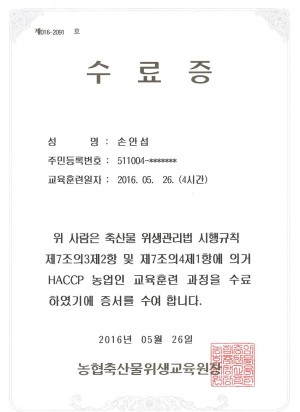
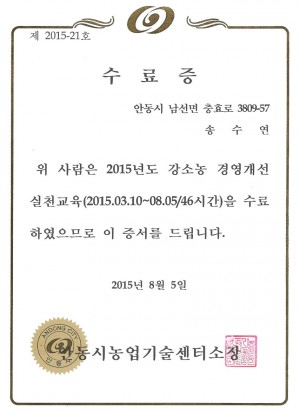
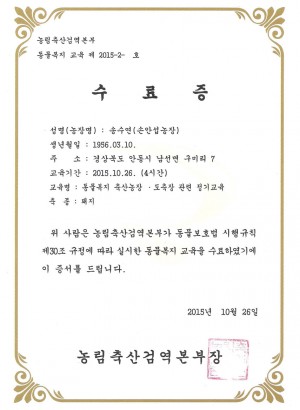
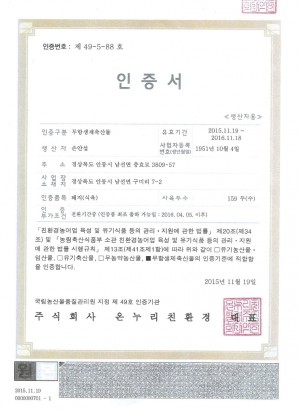
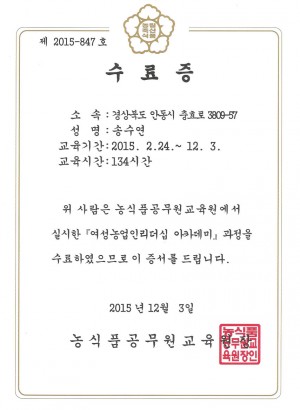
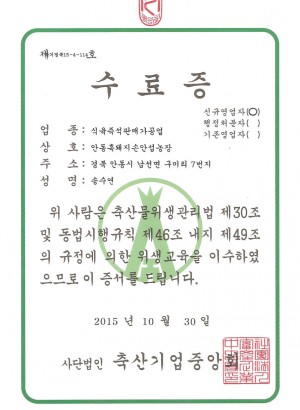

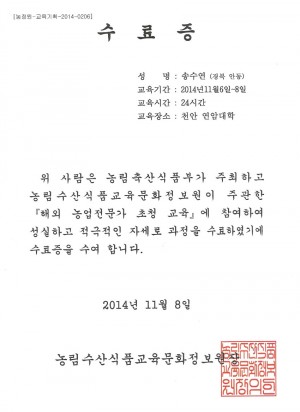

댓글목록
등록된 댓글이 없습니다.